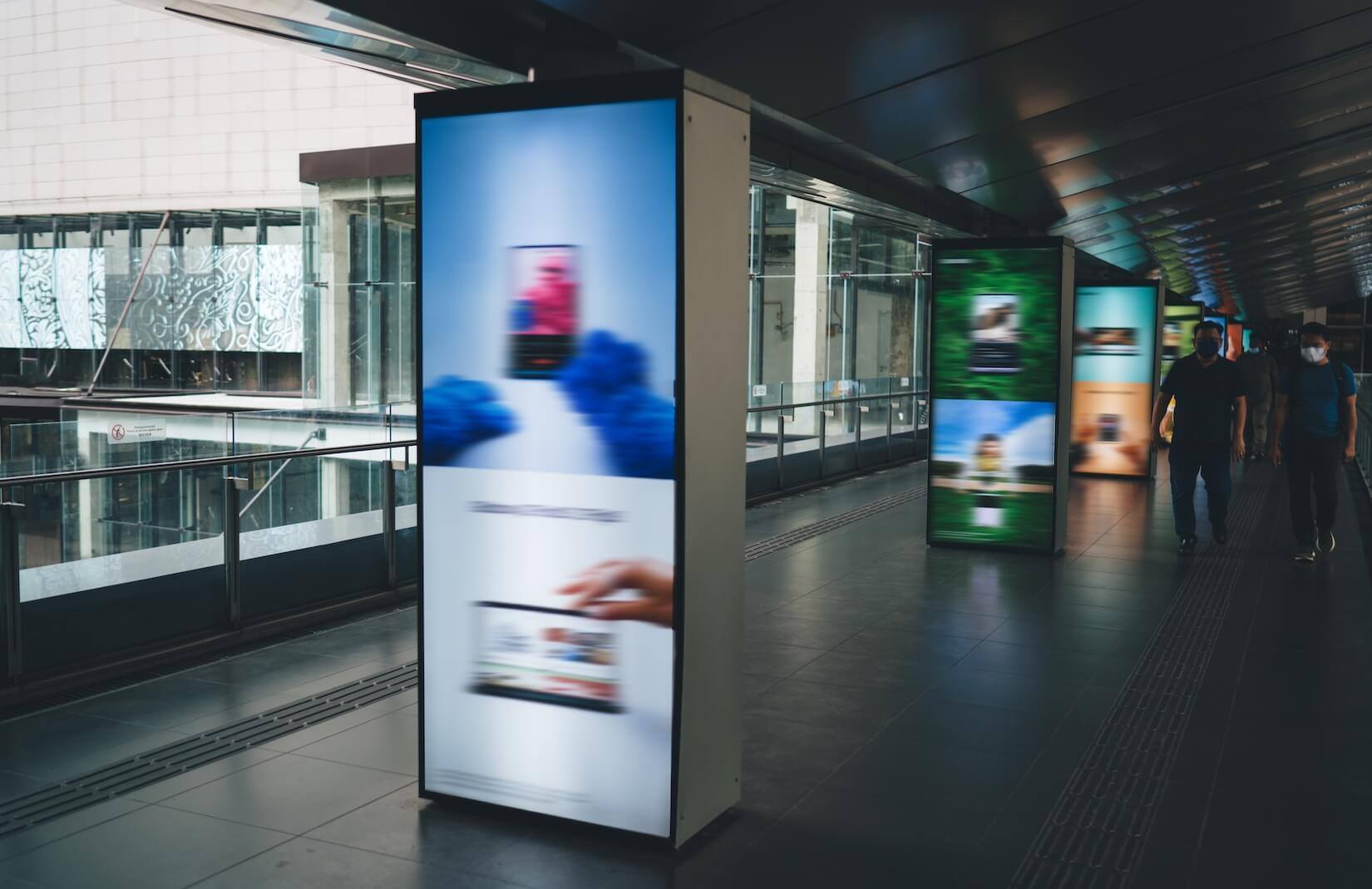
Picture this: You're walking past an out-of-home sign and an ad catches your eye—not just any ad, but one that feels like it was meant for you, right at that moment. This is no accident; it’s the result of contextual targeting. By placing ads where they align with consumers' interests, marketers can craft messages that resonate more deeply and engage more effectively. So, what exactly is contextual targeting, and how does it work in spaces like out-of-home (OOH) advertising? Let's dive in.
Understanding contextual targeting
Contextual targeting is an advertising strategy that involves placing ads based on the potential environment around it. Essentially, it focuses on the context of the content rather than the individual viewing it. For example, an ad for running shoes might appear on a website with content about marathon training or on a screen in the parking lot of a gym, ensuring that the ad is relevant to the viewer's current interests. This form of targeting differs from behavioral targeting, because it leverages topics, locations and themes relevant to the ad versus delivering it based on a user’s past actions.
The benefits of contextual targeting
- True relevance: Since ads are placed in contextually relevant environments, they are more likely to resonate with the audience, leading to higher engagement rates.
- Privacy-friendly: Contextual targeting doesn’t require tracking individual users or collecting personal data, making it a more privacy-compliant option, which is especially important in a world where data privacy regulations are becoming stricter.
- Better brand safety: By placing ads in relevant environments, brands can avoid placing their ads in places that might be harmful to their reputation.
- Higher reach: Contextual targeting allows advertisers to reach a wide audience without relying on extensive user data, making it a versatile and lower-resource option.
Contextual targeting in out-of-home advertising
While contextual targeting is often linked with digital advertising, out-of-home is the perfect medium for it. Unlike traditional digital ads that rely on changing digital trends and user preferences, OOH ads are placed in physical environments where they naturally align. It seamlessly integrates the advertisement into a consumer's journey, making it more relevant and memorable.
Imagine you're heading to a concert venue, and as you're almost there, you pass a billboard promoting the latest Bluetooth speakers, making the product a natural part of your experience. That's contextual targeting at its best—reaching the right audience at the right time and place without feeling intrusive.
How contextual targeting works in out-of-home
In the context of out-of-home advertising, contextual targeting involves placing ads in specific locations or environments that align with the content being consumed or the activities taking place around them. For example:
- Transit hubs: Ads promoting travel insurance or luggage brands might be displayed in airports or train stations, targeting travelers who are actively thinking about their next trip.
- Shopping centers: Retailers can use contextual targeting in malls to advertise seasonal products or promotions based on the time of year or upcoming holidays. (Tip: take this even further by pairing contextual targeting with dynamic creative!)
- Urban areas: Digital billboards in city centers can dynamically change content based on real-time factors like weather conditions or local events, ensuring the ads remain relevant to the audience at that moment.
The advantages of contextual targeting in out-of-home
- A better consumer experience: By delivering ads that align with the context of their environment, brands can create a more cohesive and engaging experience for consumers, making them more likely to respond to the message.
- Timely and relevant messaging: When it comes to digital out-of-home (DOOH), ads can be updated in real-time to reflect current events or trends, ensuring that the content is always relevant to the audience.
- Simply put, it works: Ultimately, consumers are more likely to notice and engage with ads that are contextually relevant to the world around them.
Smart ways to use contextual targeting in out-of-home
- Weather-responsive campaign: Consider a campaign that showcases different products or headlines based on the local temperature. For example, promote refreshing, cold beverages on hot days, and warm, comforting drinks on cooler days. This type of contextual targeting taps into consumers' immediate needs, making your message more relevant and engaging. (Check out how UGG used this approach in their retail strategy.)
- Event-based targeting: Tailor your ads to major events that fit your brand and target audience’s interests. For example, during a major sporting event, a sportswear brand can feature real-time updates and promotions leveraging dynamic creative capabilities.
- Holiday-themed ads: Use contextual targeting during the holiday season by placing ads in malls and city centers that highlight holiday sales, gift ideas and festive promotions. With this approach, the ads are not only seen but also resonate with the holiday spirit, increasing the likelihood of consumer action.
Conclusion
Contextual targeting offers a way to deliver relevant, privacy-friendly ads. It extends beyond online advertising into the physical world of out-of-home media, where it can create meaningful connections with consumers in the environments where they live, work and play.
As technology continues to evolve, the possibilities for contextual targeting in digital and out-of-home spaces will only expand, offering new and innovative ways for brands to reach their audiences with the right message at the right time. Whether you're looking to improve brand safety, enhance consumer engagement or deliver more relevant ads, contextual targeting provides a versatile opportunity to adapt to the world around us.


